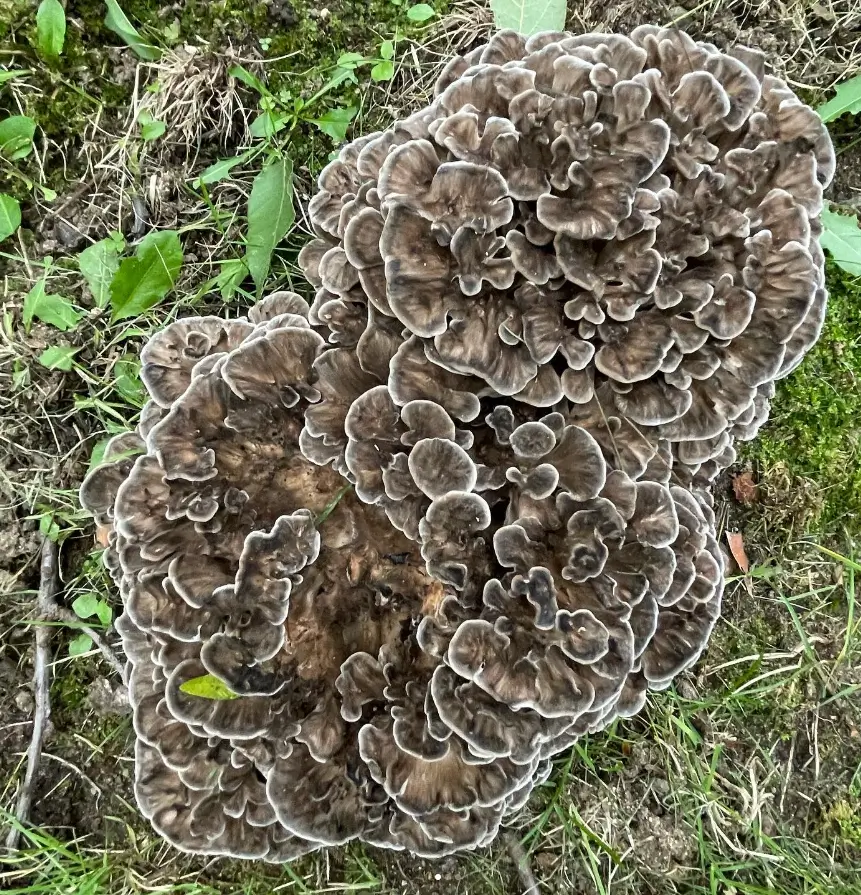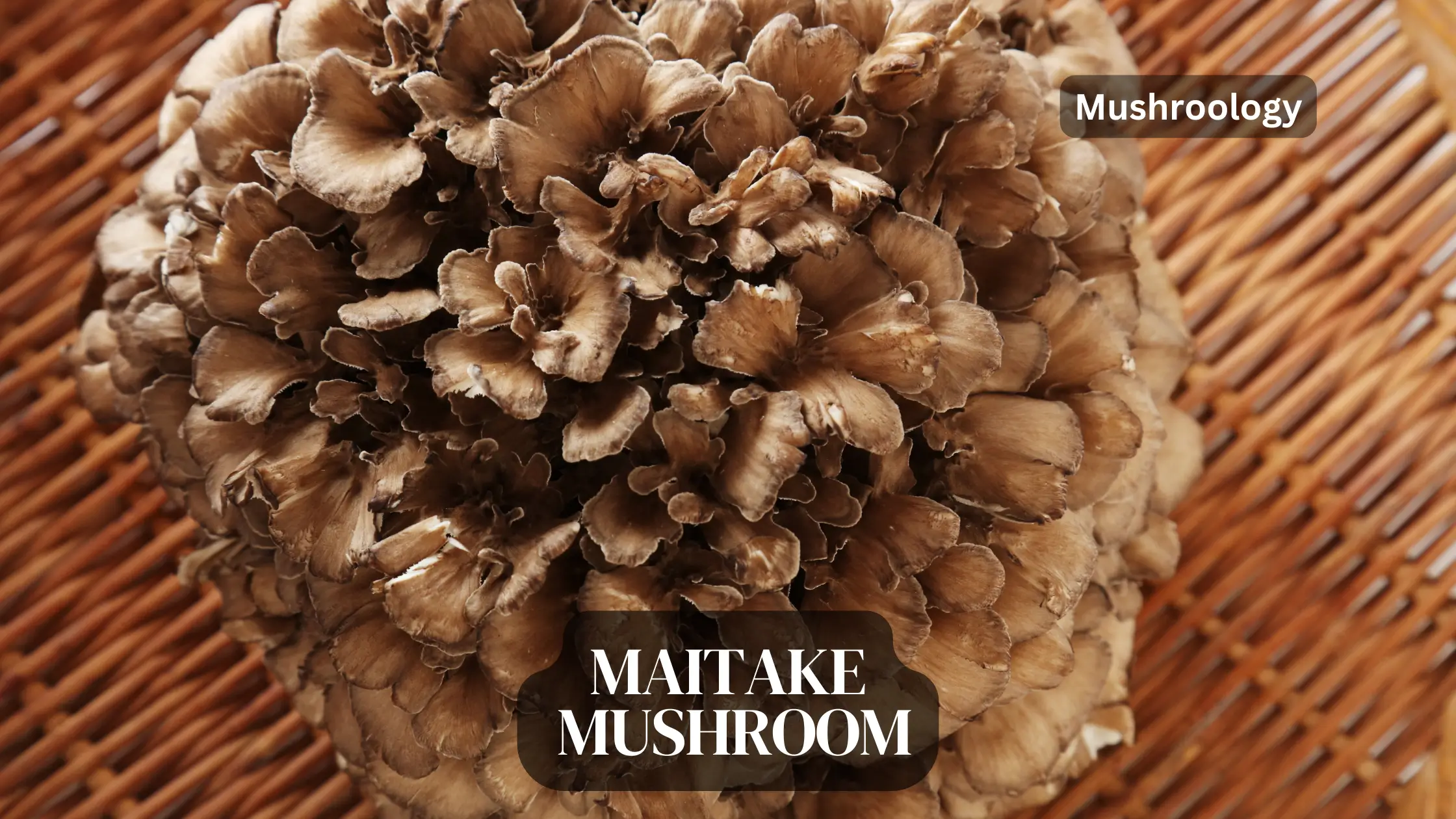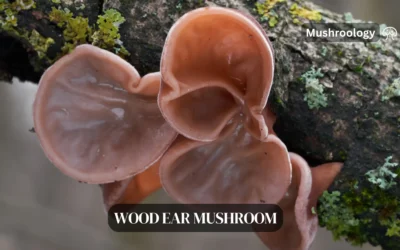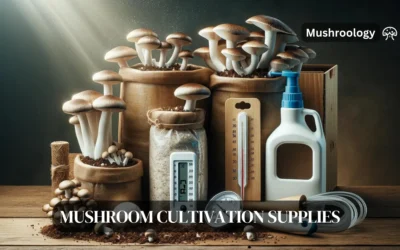Did you know that a single cluster of Hen of the Woods mushrooms can weigh up to a staggering 50 pounds? This culinary delicacy, also known as Maitake, is not only a forager’s dream but can also become a prized addition to your own garden. I’ll share my personal journey into successful maitake cultivation, guiding you from spore to harvesting hen of the woods mushrooms right in your backyard.
Key Takeaways
- Discover the unique growing conditions required for Hen of the Woods mushrooms.
- Learn tips and tricks for a bountiful home harvest of maitake mushrooms.
- Understand the importance of selecting the right environment for successful cultivation.
- Gain insights into the optimal harvesting techniques specific to Hen of the Woods.
- Acquire practical knowledge for storing and enjoying your homegrown mushrooms.
What is Hen of the Woods Mushroom
As I delve deeper into the fascinating world of maitake mushrooms, it strikes me that these fungi are not just any ordinary addition to a dish but a treasure trove of taste and tradition. Known scientifically as Grifola frondosa, these mushrooms are revered across continents for their unique flavor and potential health benefits.
While the Western world may recognize them as ‘hen of the woods’ or ‘sheep’s head,’ I find the Japanese name, maitake, meaning “dancing mushroom,” particularly compelling. It’s as if the mere mention of their name invites a culinary celebration.
These polypore bracket fungi thrive notably on oak trees, but you’ll also find them gracing the bases of maple and elm trees. Each cluster can become a substantial harvest, sometimes weighing as much as 50 pounds. Their presence is not merely a gift for the palate but perhaps also for our well-being, as ongoing research suggests potential benefits in combating certain cancers, diabetes, and hypertension.
How to grow maitake mushrooms?

Choose the right logs for cultivation of Maitake mushrooms
The selection of logs is crucial to ensure a successful harvest. Growing Maitake mushrooms demands specific conditions, so I always turn to the robust and reliable oak as the foundational medium for cultivation. When selecting oak logs for Maitake, look for wood that is fresh, recently cut, and most importantly, free of any signs of disease or decay. These logs will host your Hen of the Woods mushrooms, nurturing them to fruition.
Preparing Your Logs for Inoculation
Once the perfect logs have been selected, the next step is preparing logs for mushroom cultivation. This involves a sterilization process which may include pressure cooking, steaming, or boiling. By doing so, we create an environment that is inviting for the Maitake spawn. Remember, after treating, they must be allowed to cool, providing a clean slate for the inoculation process.
Inoculate the Logs with Maitake Spawn
With our logs selected, cut, and sterilized, now comes the pivotal step of inoculating logs. It’s here that we introduce the Maitake spawn to its new home. Using high-quality mushroom growing supplies, we ensure that the spawn makes contact with both ends of the log, promoting an even spread of the mycelium. This careful procedure is one of the most critical steps to grow Hen of the Woods mushrooms.
To summarize, here’s a handy table of the key tasks and considerations in each of these stages:
| Stage | Key Task | Considerations |
|---|---|---|
| Log Selection | Finding suitable oak logs | Ensure freshness and no disease |
| Log Preparation | Sterilizing through pressure cooking, steaming, or boiling | Proper cooling post-treatment |
| Log Inoculation | Introducing Maitake spawn to logs | Clean environment, even mycelium spread |
Remember, patience and precision are your allies in this endeavour. With care and attention to detail, you can transform mere oak logs into a flourishing forest of Hen of the Woods mushrooms.
Preparation Is Key: Sterilizing Your Logs
When venturing into the realm of indoor mushroom cultivation, particularly for maitake, one fact stands incontrovertible: sterilization is not a step to be underestimated. I’ve discovered that sterilizing logs for maitake growth is a crucial cornerstone for success, as the logs provide the very foundation for your harvest. By fostering a sterile environment, we deny any unwelcome fungi or bacteria the chance to usurp our maitake’s nutrients or real estate. Let’s dive into the process that sets the stage for bountiful growth.
To begin, we need to discuss the options available for sterilization, each with its own set of benefits. Whether it’s pressure cooking at 15 psi for precisely 120 minutes, steaming your logs for a solid 3-6 hours, or opting for boiling them for about an hour, the goal is unvarying: create a pristine substrate for your precious maitake spawn.
| Sterilization Method | Duration | Temperature | Required Equipment |
|---|---|---|---|
| Pressure cooking | 120 minutes | 15 psi | Large pressure cooker |
| Steaming | 3-6 hours | N/A | Steam source and enclosed area |
| Boiling | 1 hour | 100°C (212°F) | Large boiling pot or vat |
Moreover, while each approach shares a common purpose, I prefer pressure cooking. This method has never failed to deliver a consistently sterile outcome.
To wrap up our sterilization saga, remember that this process is paramount in the grand scheme of growing maitake. Ensure you strictly adhere to the times and conditions to maintain the wood’s integrity and set the stage for eventual mushroom fruition. Good luck, and may your logs be forever free of contaminants!
Caring for your Maitake logs during incubation
Embarking on the journey of indoor mushroom cultivation is quite an adventure. Particularly with maitake mushrooms, or Hen of the Woods, dedicating ample care during the incubation stage is key. Let me walk you through the steps to ensure a flourishing environment for your maitake logs.
Monitoring Temperature and Moisture Levels
The perfect incubation space for maitake logs strikes a balance between warmth and humidity. Your logs crave a consistent temperature range of 55-70°F. Monitor this closely using a reliable thermometer and be mindful of any excessive fluctuations that could hinder mycelial growth.
Maintaining the moisture content of the logs is equally crucial. The goal is to keep your logs damp to the touch, replicating the moist woodland floors. However, avoid an overly wet environment as it could lead to mold issues and negatively impact your healthy mycelial growth. I suggest a routine check-up twice a week to optimize conditions and adjust as necessary.
Identifying Mycelial Growth and Contaminants
As your maitake logs begin to incubate, you’ll notice a telltale sign of progress: white mycelial growth spreading across your substrate. This network of filaments will show itself with a mix of white and orange patches. It’s a beautiful moment, witnessing the initial steps of what will eventually become delicious mushrooms.
However, in the world of fungi, unwanted guests are always a possibility. It’s pivotal to recognize mushroom cultivation contaminants early on. Should you find greenish hues or black spots, these might be indicators of mold or spores from other fungi. While not all are detrimental to maitake mushrooms, they’re certainly not what we’re looking for.
- White and rust-colored patches suggest healthy growth.
- Green or black spots could be contaminants — take note and manage accordingly.
By closely monitoring temperature and moisture, and by keeping an eye out for both healthy mycelial growth and potential contaminants, you’ll create an optimal environment for maitake mushrooms to thrive. It’s a process that requires patience and attention to detail, but the reward of home-grown maitake is undoubtedly worth it.
Outdoor Cultivation Techniques: Burying and Maintaining Logs
After the rigorous process of indoor incubation, it’s time I take my maitake cultivation outdoors. This crucial shift to outdoor mushroom cultivation paves the way for more efficient growth and simulates the natural habitat conditions these mushrooms so dearly love. Burying logs for maitake cultivation isn’t just about sticking them in the dirt; it’s an art that requires precision, patience, and a true understanding of the maitake lifecycle.
I begin by carefully removing the logs from their bags, taking care not to disturb the mycelium that’s started to form. Burying them vertically, I ensure that just the tip of the log remains visible above the soil level. This practice is not just for aesthetics; it protects the spawn and maintains the needed humidity and temperature for optimal growth.
The transition from indoor to outdoor is a delicate one. I’ve compiled a detailed table below to ensure that you have all the essential information for successfully burying and maintaining your maitake logs:
| Activity | Date/Time | Details | Expected Outcome |
|---|---|---|---|
| Log Selection | Post-Inoculation | Choose healthy, colonized logs from indoor incubation. | Logs ready for outdoor setup. |
| Site Preparation | 1-2 Days Before Burying | Select a shaded area with rich, moist soil. | An ideal environment for log placement. |
| Log Burying | Early Morning | Logs are buried vertically with the top exposed. | Logs simulate the natural growing conditions. |
| Monitoring | Daily | Check for proper soil moisture and log stability. | Healthy mycelium growth without contamination. |
| Maintenance | As Needed | Apply water during dry spells, prevent soil erosion. | Continuous, uninterrupted maitake development. |
Finally, it’s time to play the waiting game. Nature takes its course, and my maitake should begin to fruit with the right conditions. What starts as a laborious venture indoors blossoms into a rewarding harvest outdoors. Patience and consistent care are the backbones of fruitful outdoor mushroom cultivation.
Adhering to this roadmap, I look forward to witnessing the lifecycle of maitake culminate in the fruits of my labor—right in my own backyard.
Harvesting Your Maitake
As a passionate forager and cultivator, I’ve learned that timing and proper technique are crucial when harvesting Hen of the Woods. Let me guide you through the essential steps to ensure your maitake mushrooms are collected at their peak for optimal flavor and freshness.
When to harvest your maitake mushrooms?
Take note of the best time to harvest maitake—typically late summer to fall, around one year after you’ve buried the logs. Look for the fronds to reach a length of 1-2 inches. This is when they are most succulent and ready for harvest. Gently twist and pull off the maitake mushrooms to avoid damaging the mycelium, encouraging future growth.
How to store maitake mushrooms?
After successfully harvesting your mushrooms, the next critical steps are cleaning and storing hen of the woods properly. Given their intricate fronds, they can trap a lot of debris, so thorough cleaning is a must. Use a soft brush or a damp cloth to gently wipe away any dirt.
For maitake storage tips, remember that these mushrooms have a delicate texture and should be consumed quickly. However, if you need to store them, keep these tips in mind:
| Storage Method | Duration | Tips |
|---|---|---|
| Refrigeration | Up to 7 days | Place in a paper bag and store in your refrigerator’s crisper drawer. |
| Freezing | Several months | Blanch and freeze in an airtight container or zipper bag to preserve texture. |
| Drying | Several months to a year | Dehydrate the mushrooms and store them in a cool, dark place in an airtight container. |
How to freeze hen of the woods mushrooms?
To freeze Hen of the Woods mushrooms, follow these steps:
- Cleaning and Preparation:
- Clean the mushrooms thoroughly, removing any dirt, leaves, or debris.
- Separate the mushrooms into large leaves or clusters and inspect for twigs and debris.
- Cut away dirty or discolored portions and ensure the flesh is pure white.
- Cut the mushrooms into thick slices or clusters for easier freezing and cooking.
- Freezing Methods:
- Raw Freezing:
- Place the cleaned and prepared mushrooms on a cookie sheet lined with parchment paper.
- Freeze the mushrooms until they are solid, then transfer them to a ziplock or vacuum-seal bag.
- Cook the mushrooms straight from frozen to maintain their texture and flavor.
- Sauté and Freeze:
- Sauté the mushrooms in butter or oil until they release their liquid and the butter or oil is absorbed.
- Let the mushrooms cool, then freeze them in individual containers or ziplock bags.
- Dry Sauté and Freeze:
- Slice the mushrooms thinly and cook them in a hot, dry pan until all the liquid has evaporated.
- Let the mushrooms cool, then freeze them in measured quantities.
- Raw Freezing:
- Storage and Cooking:
- Store the frozen mushrooms in airtight containers or bags to prevent freezer burn.
- Cook the mushrooms straight from frozen to maintain their texture and flavor.
By following these steps, you can effectively freeze Hen of the Woods mushrooms and enjoy them throughout the year.
How to prepare Maitake Mushroom and Health Benefits
The culinary uses of maitake are as versatile as it gets. I often find myself reaching for these mushrooms when I want to add a rich, spicy kick to my dishes.
From the simple joy of sautéing them in a bit of olive oil to the more intricate preparation of roasting or even integrating them in risottos or soups, maitake mushrooms infuse a depth of flavor that is unmatched. They hold up beautifully in a variety of cooking methods, making them a staple in my kitchen not only for their taste but also for their acclaimed maitake mushroom health benefits.
Speaking of health, the interest I have in these delightful fungi is bolstered by their potential medicinal properties. Research points to maitake’s possible anti-cancer effects, a characteristic that has sparked a wave of interest in the health community. On a personal level, knowing that what I’m consuming could be beneficial for managing diabetes and hypertension makes incorporating maitake mushrooms into my diet a no-brainer. For anyone looking to marry taste with wellness, this mushroom certainly fits the bill.
As a culinary enthusiast always on the lookout for ingredients that bring both flavor and health benefits to the table, I find myself returning to maitake mushrooms. Whether I’m throwing together a quick stir-fry or crafting an elaborate meal for friends, these mushrooms are an integral part of the culinary experience. They’re a testament to the beauty of nature’s provisions and remind me that the best foods are those that are not only delicious but also possess the power to heal.
FAQ
What are Hen of the Woods Mushrooms?
Hen of the Woods, also known as Maitake or scientifically as Grifola frondosa, are large, edible bracket fungi known for their rich flavor and potential health benefits. They are typically found growing at the base of oak trees.
Why is the Hen of the Woods Mushroom called ‘Maitake’?
‘Maitake’ is a Japanese term that translates to “dancing mushroom”. This name may reflect the unique appearance of the mushroom or the joy it has historically brought to those who found or consumed it.
How do you select logs for Maitake mushroom cultivation?
For successful maitake cultivation, choose fresh, healthy oak logs free from disease. These logs will be the foundation for your mushroom growing and should be prepped accordingly before inoculation.
What are the steps to prepare logs for inoculation?
Preparing logs for mushroom cultivation involves sterilizing them through methods such as pressure cooking, steaming, or boiling. After sterilization, cool the logs to a safe temperature before inoculating them with maitake spawn.
How is inoculation done when growing Hen of the Woods mushrooms?
Logs are inoculated with maitake spawn by introducing the spawn into a sterilized environment, ensuring even coating around the cut ends of the log. This is typically done in clean, controlled conditions to prevent contamination.
How important is sterilization in the cultivation of Maitake mushrooms?
Sterilization is crucial in maitake mushroom cultivation. It eliminates potential competitors and contaminants, creating a sterile substrate that’s ideal for the maitake spawn. This typically involves pressure cooking the logs or treating them with steam or boiling water.
What conditions do Maitake logs need during incubation?
During incubation, which lasts for 2-3 months, ensure your maitake logs are kept in an area with temperatures ranging from 55-70°F. It’s important to balance moisture levels, light exposure, and temperature to mimic natural growing conditions.
How do you identify healthy mycelial growth?
Healthy mycelial growth for maitake mushrooms is indicated by a white coating with occasional orange rust-coloured patches. Any signs of green mold should be monitored closely, although they generally don’t affect maitake growth.
What are the outdoor cultivation techniques for Maitake?
Outdoor cultivation involves transplanting the inoculated logs by burying them vertically, with just the top exposed. This mimics the natural habitat of Hen of the Woods and encourages fruiting.
How do you harvest Hen of the Woods mushrooms?
Harvest Hen of the Woods mushrooms when the fronds have grown 1-2 inches long, typically from late summer to fall, about a year after burying the logs. They should be harvested by gentle pulling and twisting to avoid damage to the log and future yields.
How should Maitake mushrooms be cleaned and stored?
After harvesting, clean the mushrooms thoroughly to remove debris. They can be stored in a refrigerator and are best enjoyed when cooked, as cooking helps to enhance their natural flavors.
What are the health benefits of Maitake mushrooms?
Maitake mushrooms are attributed with several health benefits, including potential anti-cancer effects and aiding in the treatment of diabetes and hypertension. Their earthy and spicy flavors make them a favorite in many culinary dishes.





